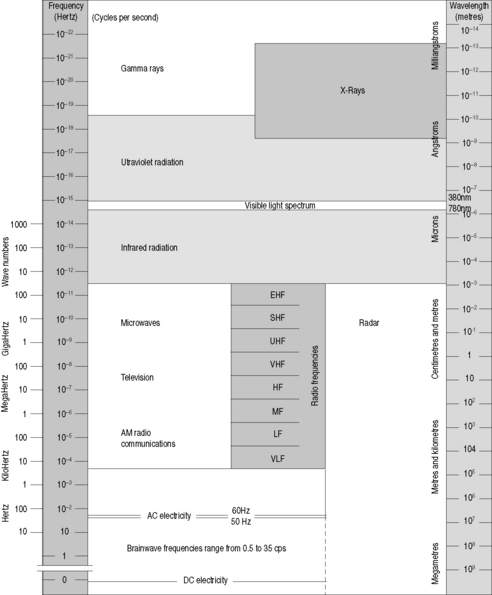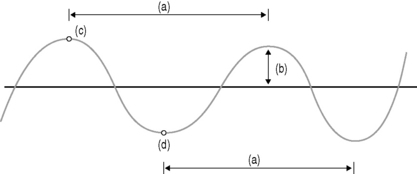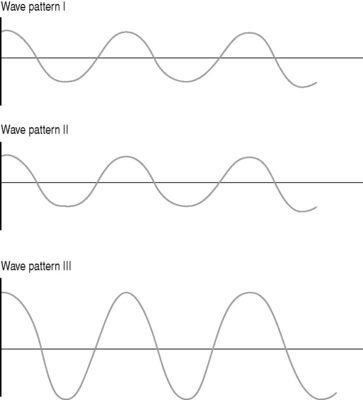Chapter 4 Human beings as complex, dynamic systems of energy
Historically, much of the conventional medical research and meaning of health was determined by what the physical body was doing on a chemical and structural level. There was the recognition that thoughts and language play a role in disease, but the interpretation, all too often, started and ended with cellular processes. Human beings were viewed using mechanistic and dualistic concepts; they were treated as separate from their external environment, and the mind was viewed as separate from the body.
These old beliefs were challenged for years as there were many unanswered questions. For example, the speed of communication could not be explained by the key and lock analogy that was used to explain communication across cellular membranes. There was no clear explanation of how the body was able to handle multiple tasks simultaneously, how language, thoughts, and emotions elicited specific physiological changes, or how the environment or social factors impacted health. There was also little knowledge of how memory was stored or retrieved or what initiated or controlled functions such as growth, development, or longevity (McTaggart 2002).
The perception and understanding of how human beings function and survive has been broadened and continues to expand based on new discoveries. Systems theory supports the concepts of vitalism and holism and provides a framework for explaining the complexity and dynamic interconnectedness of all aspects of life (Capra 1996). The discovery that electrical fields of energy are the foundation of life provides increased knowledge about cellular communication and how endogenous and exogenous factors affect health (McTaggart 2002). Together, these theories provide a model that supports the principles used in the naturopathic assessment of symptoms and diseases.
WAVES OF LIGHT ENERGY
The fundamental basis of life is electrical fields of energy. Everything in the world, regardless of how dense it is, or whether it is tangible or intangible, is composed of electric charges that interact with other energetic fields (Haisch et al 1994, Hunt 1996). Human beings are not simply biochemical beings, but energetic and informational beings that interact and communicate on a constant basis both within themselves and with their external world (Oschman 2003).
The presence of electrical fields around living things was first studied in the 1940s by Harold S. Burr, a neuroanatomist from Yale University (Burr 1972). He discovered that all sorts of organisms, from molds, to salamanders and frogs, to humans, possess an electrical field. He also discovered that the electrical fields change with stages of growth, seasons, sleep versus waking, and between health and disease (McTaggart 2002).
In the 1970s and 1980s the researcher Fritz-Albert Popp was studying the effects of electromagnetic radiation on living systems. What he revealed was that all living things – from the most basic of plants or animals, to human beings – emitted a permanent current of photons and that these vibrations of light are a major component of the communication system of the body (Oschman 2003). What he also discovered was that the number of photons that an organism emits is linked to their position on the evolutionary scale and to their degree of health. The more complex and healthy an organism, the fewer photons they emit. Hence, rudimentary animals and plants have a very high frequency of electromagnetic wave, within the visible light range, whereas humans emit much far photons (Popp et al 1992, Hunt 1996).
Both the tangible and the intangible possess an electrical field that emits light. The frequency of electrical fields that correspond to the biochemical and biological processes in the body, are detectible as frequencies that belong to one or more radiation bands in the electromagnetic spectrum (Sylver 2008). The electromagnetic spectrum represents the different energy ‘oscillations’ and wave patterns that comprise our known universe (Fig. 4.1). It ranges from the slower-moving, lower-energy electrons of electrical current to the faster-moving, higher energy photons of visible light and other wavelengths.

Fig 4.1 The electromagnetic spectrum.
With permission from Sylver N 2008 The Holistic Handbook of Sauna Therapy. Townsend Letter, February/March 2008.
The different fields of light energy interact and are linked by electromagnetic energy. This interlinking creates a coalesced wave form that holds the properties and qualities of each component and has its own unique vibrating light energy. This ability of waves to interact, to store and carry information is the means of cell-to-cell communication and occurs in response to internal and external signals (McTaggart 2002, Oschman 2003).
The more a wave pattern manifests as a tangible structure the more slowly it changes; the more intangible, the more quickly it changes. For example, thoughts and moods are intangible and can change very quickly; organs and tissues are tangible, they continually change and regenerate, but more slowly – sometimes to the point of looking fixed in their structure. Because wave patterns hold the accumulation of all the information that they have encountered, they provide the body with the ability to remember how to look and act, to remember past events, and to remember how to perform different tasks (McTaggart 2002). Wave patterns provide a much more complete explanation of how the body is able to manage multiple, complicated tasks in different parts of the body instantaneously.
All wave patterns have a characteristic frequency, amplitude, wavelength, and phase (Fig. 4.2) (Sylver 2008). As wave patterns encounter each other (called ‘interference’), the way in which they overlap influences the impact of the union. If the wave patterns are in sync – that is, they are in phase with each other, the impact is additive and will be reflected in the new waveform having an amplitude that is greater than each individual wave’s amplitude – like increases like. Two waves are said to be in phase when they are both, in effect, peaking or troughing at the same time, even if they have different frequencies or amplitudes. Getting ‘in phase’ is getting in sync (McTaggart 2002). This type of encounter is called ‘constructive interference’ (Fig. 4.3). If the wave patterns are opposite – that is, one is peaking while the other is troughing, the two wave patterns will tend to cancel each other out – opposites balance. This type of union is called ‘destructive interference’.
CELLULAR COMMUNICATION
Cellular communication is initiated by endogenous and exogenous factors; between individuals and their environment, between individuals, within all aspects of an individual, and between organs, tissues, and cells. Some signals are tangible, some intangible; all have an energetic wave pattern with their own rhythm and frequency.
The communication functions of the nervous, endocrine, and cardiovascular systems were the basis for understanding cellular communication, yet there was always the sense that there was something more. For example, there are no nerves connecting muscles with the arterioles that supply them with oxygen and nutrients. A piece of the puzzle was uncovered in the 1980s when it was discovered that part of this communication was due to the exchange of nitric oxide. Even then there was the recognition that there was something even more intangible than gas. The missing piece is vibrational wave patterns of energy.
Energy fields are available to nature as a means for providing even faster control than a diffusible gas with a 10-second lifetime. Some energy fields travel at the speed of light; others are instantaneous. For nature to have left these communication modalities out of its ‘bag of tricks’ is highly unlikely (Oschman 2003).
What determines cellular communication and life is constant vibration and interaction of all components. Life is vibrational energy, movement is life; if no movement there is death (Emoto 2004).
We now know that light is a major component of the vibratory communication system of the body, because such vibrations have been both predicted on the basis of fundamental biophysical theory and measured by sensitive devices (Popp et al 1992, Oschman & Oschman 1997).
Each color vibrates in specific wave patterns and at a specific frequency. ‘In the visible spectrum, red, with the longest frequency, has the lowest vibration rate, and violet, with the shortest frequency, has the highest vibration rate’ (Steinberg 2007). Colors have a tremendous impact on health; including, vision, mood, energy level, appetite, sleeping, and even the functioning of organs and tissues (Elvin 2007, Steinberg 2007).
Sound impacts individuals in all forms; such as spoken words, an individual’s own thoughts, words you hear from others, the sounds of nature, the environment, and music (Sylver 2008). An individual’s voice itself has a range of speaking, a specific tone, frequency, rate and pace of speech. Individuals convey energy by speaking, not just in the words that they choose, but in how they say it. Sound patterns impact health, whether we can hear them or not, and each sound is heard differently depending on the instrument that is being used. For example, all music notes are found to vibrate at specific frequency and have a specified wave length. You can hear the same vibration, although displayed differently, based on the instrument that is playing a specific note.
Cellular communication is considered healthy when there is harmony and coherence. Harmony refers to the attunement and consistency of energetic vibration throughout the body. Perfect coherence is an optimum state just between chaos and order. To maintain health you need to take in the correct quantity and quality of energy (light) from various sources such as food, sunlight, thoughts, emotions, bodywork, etc., and be able to filter it, respond to it, and use it appropriately. You also need to have all systems in the body working coherently, in harmony, alignment and in sync. The coherence between the different aspects of the body influences the movement and communication of the whole system. In other words, ill health occurs when systemic communication breaks down and when a person’s waves are out of sync with each other and with their surroundings.
Stay updated, free articles. Join our Telegram channel

Full access? Get Clinical Tree




